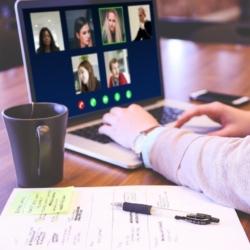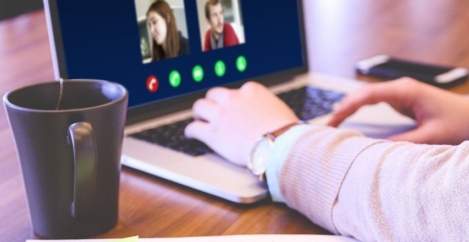September 2, 2020
Video call fatigue amounts to millions of unproductive businesses hours
 A recent study, which was commissioned by Bayfields Opticians & Audiologists and questioned 2000 people, claims people spent an average of three hours and 12 minutes each week on video calls – an increase of 120 percent compared to before lockdown. Connected Brits admit to spending hours getting ready for work-related video calls during lockdown and struggling to get back into the zone once the call is over, leading to millions of hours of ‘wasted’ work time since lockdown.
A recent study, which was commissioned by Bayfields Opticians & Audiologists and questioned 2000 people, claims people spent an average of three hours and 12 minutes each week on video calls – an increase of 120 percent compared to before lockdown. Connected Brits admit to spending hours getting ready for work-related video calls during lockdown and struggling to get back into the zone once the call is over, leading to millions of hours of ‘wasted’ work time since lockdown.
Employees spend an average of 47 minutes getting physically and mentally prepared before using tools like Zoom, Skype, and Microsoft to communicate with colleagues, clients and other work contacts, according to new research. Once the virtual meeting is over, people take an average of 18 minutes to get their head back into work-mode, with one in ten people taking at least 30 minutes before feeling productive again.
A third of people feel like they’ve spent more time than is necessary on video calls, and more than half of Brits think some video calls could have been dealt with much quicker by communicating over the phone or email. Nearly half of people (44 percent) struggle to keep up with the conversation on a video call if there are too many people taking part. Two-fifths don’t like it when other people have their cameras turned off, but over a third (36 percent) admitted to being camera shy and not having their own cameras on during video calls.
[perfectpullquote align=”right” bordertop=”false” cite=”” link=”” color=”” class=”” size=””]The number of hours spent ‘switched on’ has taken its toll on people’s physical and mental wellbeing.[/perfectpullquote]
As well as amounting to an estimated 56 unproductive working hours per employee since lockdown begun – which amounts to 862 million hours of ‘wasted’ time over the last 22 weeks – the number of hours spent ‘switched on’ has taken its toll on people’s physical and mental wellbeing. Over half (54 percent) of Brits have experienced symptoms such as insomnia, headaches, eye strain, anxiety or low moods because of using technology like video calls more during lockdown. On top of that, it takes people an average of 37 minutes to switch off when working at home, and for more than one in ten people (12 percent) it takes at least an hour to disconnect.
Royston Bayfield, founder and managing director of Bayfields Opticians and Audiologists, said:
“Using several tech devices throughout the day is common for most people, and this has proved even more prevalent during recent months during lockdown and remote working. But while technology such as video calling apps are great to stay connected with each other, using these for long periods of time can cause eye strain, neck tension and headaches, which can all lead to further physical, mental and emotional health and wellbeing problems.
“What people don’t realise is that our eyes have to adapt as we move between different activities and screens due to peoples different working distances and viewing angles. This can lead to some of the discomforts we feel, as well as prevent us from carrying out the activity as effectively as possible. And whilst some devices are crucial to us succeeding in our working lives, it’s important we find a solution to this challenge.”
Image by Jagrit Parajuli














